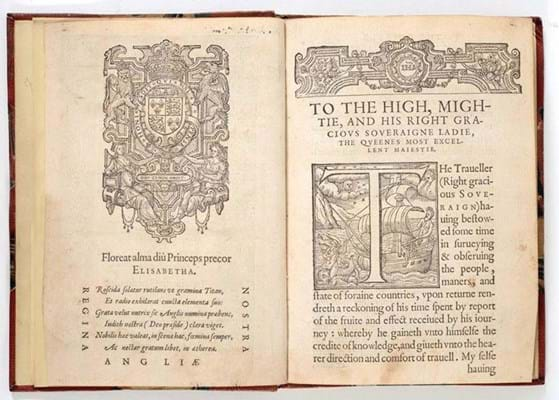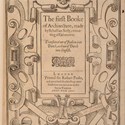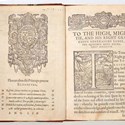Bound in three volumes, a major collection of letters relating to the Helyar family of Coker Court in Somerset was of obvious local interest in a recent Crewkerne auction.
The content of this lot, sold at £20,000 by Lawrences (25% buyer’s premium) on September 6, spanned three centuries, but of particular early note was material of the English Civil War period – including details of Col William Helyar’s detention by Roundhead forces. There was also a lot of material relating to the family’s plantations in Jamaica.
A 1639 first of Charles I’s Large Declaration concerning the late Tumults in Scotland incorporating extensive contemporary annotations also bore a Coker Court bookplate. Sold at £3000, it was one of the lots that raised record or far higher than predicted sums.
A Coker Court bookplate was also found in a collection of 42 tracts of the 1640s that made £8500. The cataloguer chose to head the partial list of contents with a 1645 account of …Examinations, and Confessions of the late Witches, arraigned and executed in the County of Essex.
Reputed to have been privately printed for the author for circulation among friends, a copy of The Lord Marques Idleness… by William Paulet, Marquess of Winchester, sold at £4200, was among the earlier lots.
In a 19th century binding but printed in 1586 and dedicated to Elizabeth I, it is filled with “sage sentences, prudent precepts, moral examples, sweet similitudes, proper comparisons and other remembrances…”.
A life of William Patten, or Bishop Waynfleet, written in Latin by John Budden, a professor of civil law at Oxford and published there in 1602, sold at what may be a record £2000.
Golden opportunity
Another rarity was Richard White’s Historiarum Britanniae, complete with all 11 parts of 1602-07 and bound as three volumes in 18th century calf gilt that bear a ‘Golden Fleece of Longepierre’ device. Sold for £20 in the 1880s Christie’s sale of the Duke of Hamilton’s library, it was bid to £5000 in Crewkerne.
Published in Oxford in 1609, a first of a famous early work on bee-keeping, Charles Butler’s The Feminine Monarchie…, made £7500.
A few leaves were shaved with loss to marginal notes and some light spotting and dampstaining was evident, but in a 19th century binding of polished calf gilt it all but trebled the previous auction best.
Sold at £16,000 was a copy in a 20th century, armorially gilt binding of the 1611, first English edition of Sebastiano Serlio’s Booke of Architecture. It bore the signature of the antiquary and official engraver to the Society of Antiquaries, George Vertue (1684-1756).
Though dampstained, shaved and otherwise soiled in a later binding, a 1627, second edition of John Brinsley’s Ludus Literarius: or, the Grammar Schoole, made £1400.
Sold at £850 was a copy in late-19th century polished calf of Mercurius Aquaticus; or the Water-Poet’s Answer to all that hath or shall be writ by Mercurius Britannicus. Running to just 22pp, this 1643 Oxford edition of a work by John Taylor claims to have been ‘Printed in the Waine of the Moon’.
Bid to £2000 was a copy in worn and broken 18th century boards of Robert Clavell’s General Catalogue of Books Printed in England since the Dreadful Fire of London. Bound with supplements numbered 1-17, this was a first edition set of 1674-78.
Published in 1685, a little work called The Laws of Honor: or, An Account of the Suppression of Duels in France, edited by John Evelyn, made £800.

Among packs of playing cards in the Lawrences sale the best hand was held by a rare, satirically inspired deck featuring political and social events of the day. Created by Armand-Gustav Houbigant and published in Metz in 1819, it comprised 34 cards and, seemingly complete, was said to be the only hand-coloured example recorded. It sold at £5400.
Captain Cook relic
Among later highlights, a 2in-long piece of wood said to have been taken from Captain Cook’s Resolution was sold for £2600. Also part of the lot were two volumes only from a 1790, Newcastle edition of Cook’s Voyages.
A group of lots that had Samuel Taylor Coleridge’s family as a provenance included a September 1811 issue of The British Neptune, or, Naval, Military and Fashionable Advertiser that carries the poet’s review of Robert Southey’s epic poem The Curse of Kehama.
That issue also includes an article headed ‘Further Advances on the Price of Bread’, and it was to that piece that Coleridge directed the critical autograph response that took bidding to £4650.

















